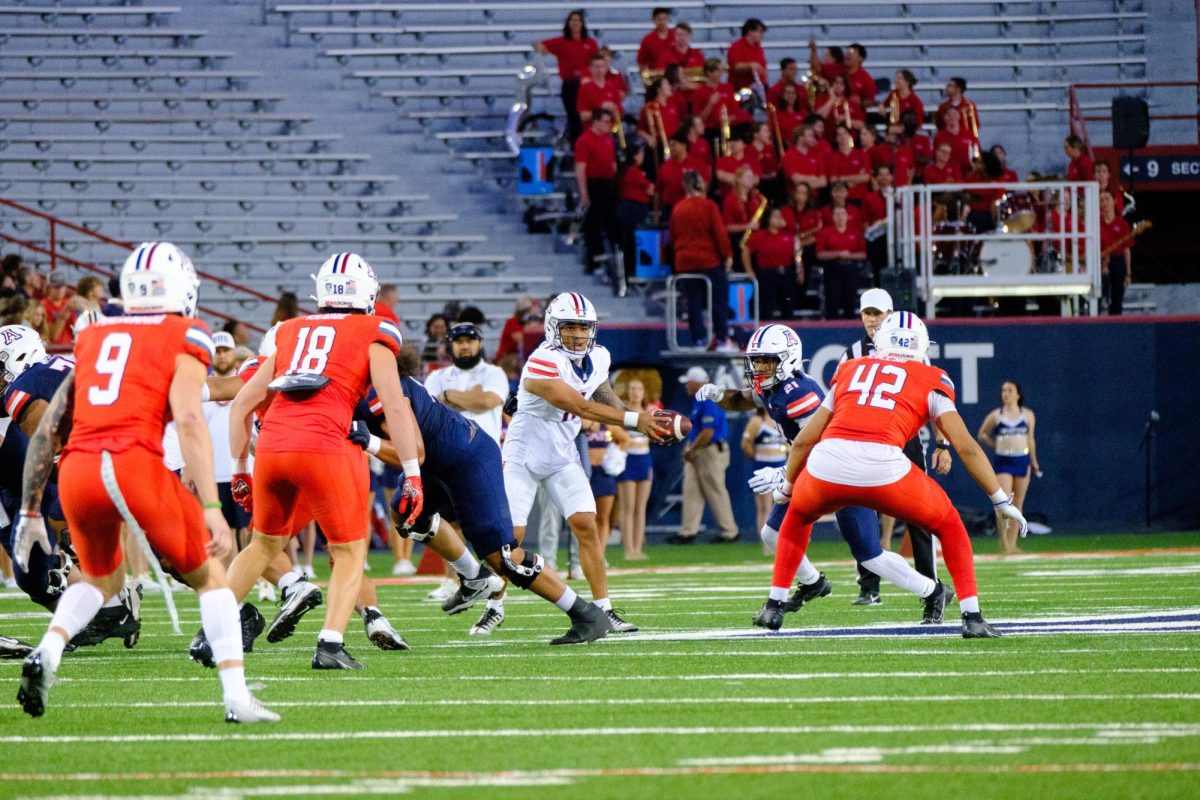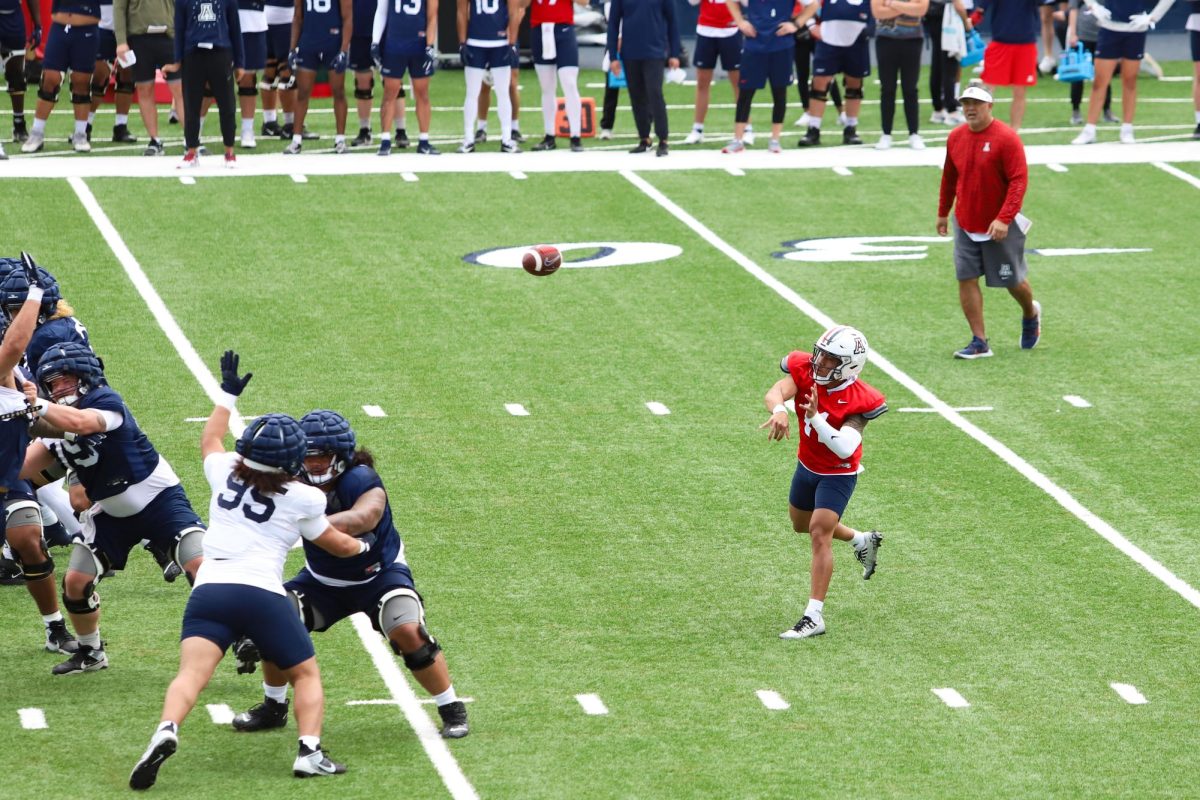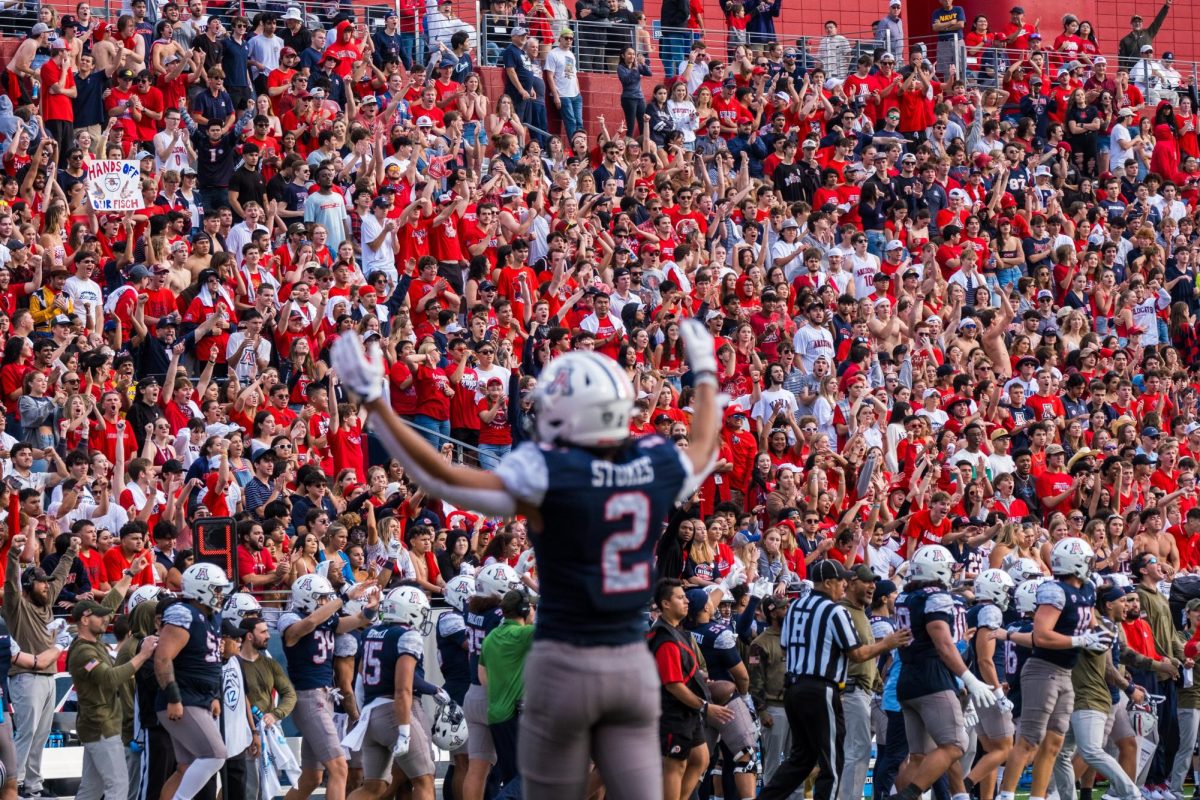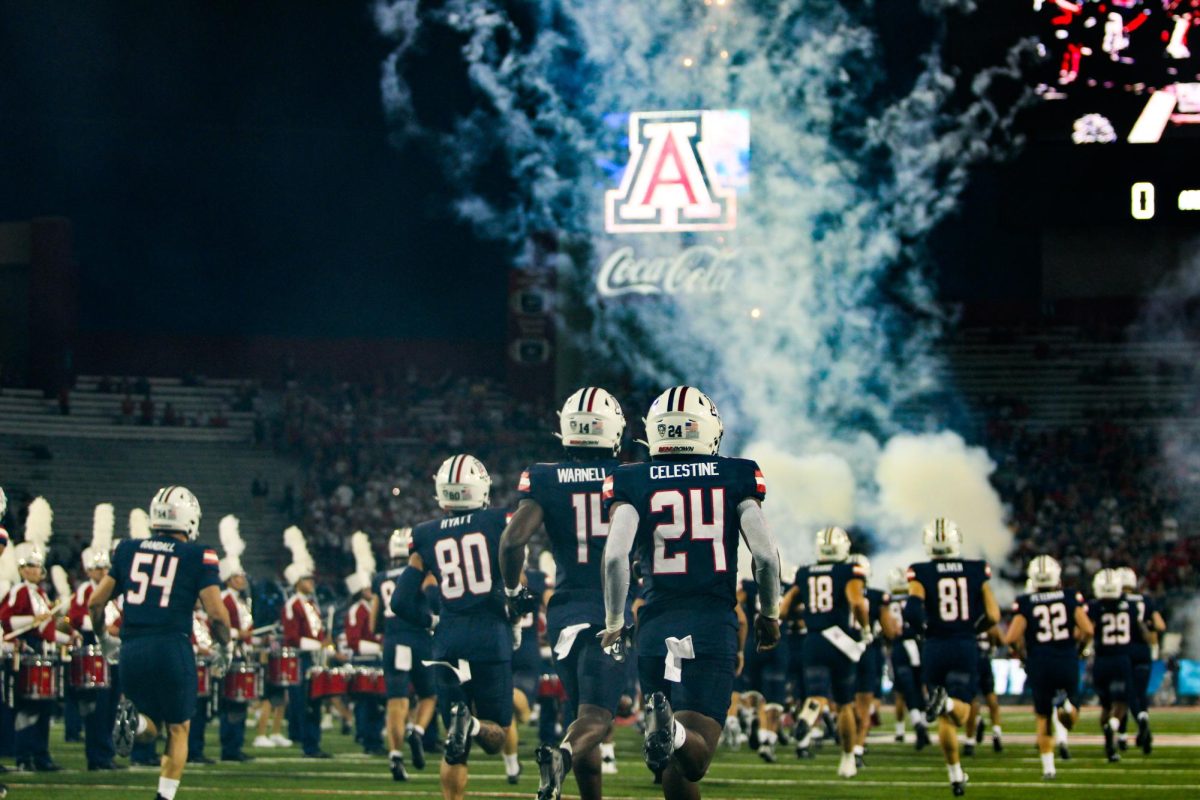PRO: Show me the money
The addition of Oklahoma, Oklahoma State, Texas and Texas Tech seems pretty damning for the future success of Arizona’s athletic teams.
From football and basketball to golf and cross country, the competition is going to be stiffer, road trips longer and the stage bigger.
But you can talk about competitive advantages or disadvantages all you want. When it comes down to it, college athletics are a business, and a multi-billion dollar one at that.
And along with those four schools comes a financial boost, one that may be able to save a program or two at Arizona — or at any other school in the Pac-12 — from getting axed.
Look at the California Golden Bears as an example. Six months ago, administrators decided to cut the Golden Bears’ baseball program. Baseball was saved when a few deep-pocketed boosters were able to come up with the $10 million needed to save the program, but the financial hole that Cal’s athletic department is in was made obvious.
Now throw in what will be even more revenue after the Pac-12’s $3 billion TV deal is reworked to include those four schools, and help from boosters won’t be needed to keep an athletic department’s head above water.
And looking at things from the conference’s perspective, adding those teams couldn’t be a smarter decision. The Pac-12 couldn’t care less about how badly Arizona fans think they’re getting screwed by the football team having to play Texas and Oklahoma ever year.
The conference is looking at the big picture, and it’s hard to turn down two of the most storied athletic programs in America, along with two up-and-comers in Texas Tech and Oklahoma State.
Sure, it might hurt the on-field performance of a few the Pac-12’s existing schools, but they’ll likely have no problem trading wins for money.
And the programs that are already competing on a national level — Oregon and USC football, ASU baseball and Arizona basketball, to name a few, aren’t going anywhere just because of a few good teams added to the conference.
The landscape of college athletics is changing. And for the second year in a row, it’s up to the country’s westernmost BCS conference to rebrand itself for the better.
—Alex Williams is a journalism junior. He can be reached at sports@wildcat.arizona.edu.
CON: Additions destroy identity, values of college sports
Football teams are big business, and I get that money and notoriety are huge when talking about bringing teams like Texas and Oklahoma to the Pac-12.
The money involved means more funding for smaller sports, and I’m betting coaches at Arizona all could use that increased spending to better their programs. But for the sake of playing devil’s advocate, what does that mean for the Wildcats and the current Pac-12 as a whole?
All of a sudden, the conference of champions becomes diluted into a superconference that scales a random and money-grubbing selection of locations.
This is an America that thinks bigger is better, but bigger also means monopolization and power to the rich NCAA organization, which is stuck in a hypocritical cycle of penalizing players for selling jerseys all the while shifting its leagues to increase and take that money for itself.
Is that what, ethically, sounds like the right thing to do?
It’s not just the disgusting nature of how making money twists decision-making, either. It’s how we, as a society, view making money as being the priority when considering the history of the old Pacific 10 Conference. Sport is all about culture, and culture is lost when we toss that historic value aside.
With a Pac-16 that could include Oklahoma, Texas, Oklahoma State and Texas Tech, there’s no more identity for that newly-branded theme of West Coast innovation that the Pac-12 touted in this summer’s video marketing campaign. Destroyed are those “rhythmic drumbeats of differentiation (that) echo generation after generation by trailblazing characters, radical rivalries and iconic moments,” as the video proclaims.
Instead, we’re left with a conglomerate of very different schools with very different sports cultures, a rift formed in the history of Arizona with its old Pac-10 pals.
Heck, the Wildcats will be lucky if they meet a UCLA in basketball or a USC in football every year — along with Arizona State, they very well could be the westernmost school in a reshaped conference.
Maybe it’s old-school thought to believe that saving history is worth bypassing some millions or billions of dollars.
Times are indeed changing, but is it too crazy to question why we need to rebrand an NCAA conference for the third time in three years?
—Kevin Zimmerman is a journalism senior. He can be reached at sports@wildcat.arizona.edu.













